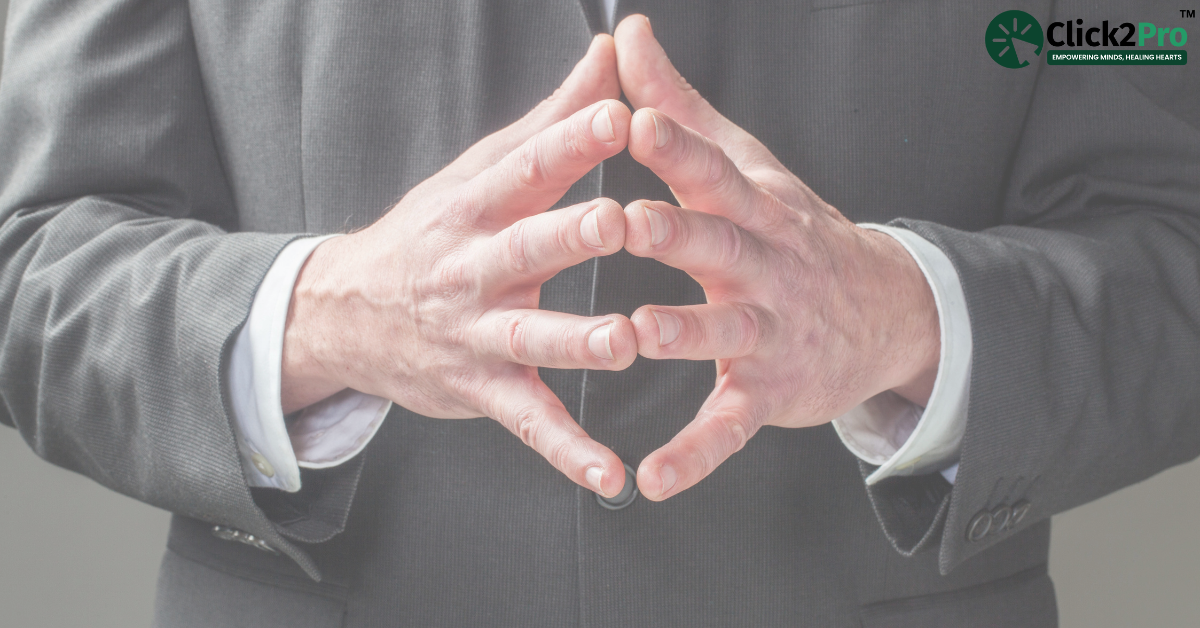
Overcoming Social Anxiety Through Body Language Psychology
Table of Contents
Social anxiety often feels like a shadow, lurking in daily situations, from speaking in groups to simply entering a room full of people. While therapy and coping mechanisms are essential for managing it, few know about the transformative power of body language psychology in alleviating social anxiety. Through understanding and adjusting subtle physical cues, individuals can find themselves feeling more confident, open, and ready to face social scenarios. In Shimoga, a vibrant city where social gatherings are common, learning to harness body language can help residents navigate social spaces more comfortably.
The Hidden Link Between Body Language and Social Anxiety
Many people with social anxiety unconsciously exhibit body language that can make them feel and appear more uncomfortable in social settings. For example, closed-off gestures, slouched postures, or even rapid movements can signal nervousness, which only deepens the feelings of social discomfort. Research indicates that shifting these physical habits can change not only how others perceive us but also how we feel internally.
One real-world example is from a young professional in Shimoga who shared her experience of trying “open body language” techniques. She mentioned that when she consciously avoided crossing her arms and practiced smiling softly, she felt her anxiety lessen in meetings. Her story shows that these small shifts can be significant for those struggling with social anxiety.
Practical Body Language Techniques to Alleviate Social Anxiety
A handful of practical body language adjustments can help reduce social anxiety. Let’s discuss some specific techniques that are simple to start practicing:
Power Posing
Power posing, made famous by social psychologist Amy Cuddy, involves adopting confident postures before a social situation. Standing tall with arms on your hips for just a few minutes before heading out to a gathering can help boost confidence. Studies have shown that this type of posing can lower cortisol (the stress hormone) and increase testosterone, helping individuals feel more assertive and relaxed. If you’re preparing for an event at places like Shimoga’s Shivappa Nayaka Palace, a power pose in private can help you feel more composed when joining the crowd.
Open Gestures
Open gestures include uncrossed arms, visible hands, and relaxed shoulders. These simple cues signal to others that you’re approachable and willing to engage. For those with social anxiety, avoiding closed-off postures (like crossed arms) helps avoid feeling “locked up.” While walking through Shimoga’s vibrant neighborhoods or attending a local event, keeping hands visible and adopting a relaxed stance can ease the mind and body alike.
Improving Eye Contact Gradually
Eye contact often causes anxiety, yet it’s one of the most powerful nonverbal signals. Practicing the “triangle method” (looking briefly from one eye to the other, then at the person’s mouth) can make eye contact feel less intimidating. Starting with brief, intentional eye contact while speaking with close friends or family is a great way to build comfort gradually.
Building Self-Confidence Through Positive Body Language
Positive body language not only impacts how others view us but also affects our own self-perception. When practicing open, upright postures, individuals can start feeling a shift in their internal narrative. Self-affirming poses, like standing with shoulders back and head held high, help reinforce confidence over time.
Take, for example, a resident of Shimoga who struggled with meeting new people. She found that when she consciously practiced standing straight and keeping her hands relaxed, she felt less anxious and more in control. This small adjustment allowed her to participate in social situations more comfortably, whether at a family gathering or a community event in Shimoga.
For individuals seeking personalized guidance to manage social anxiety or master body language techniques, consulting the Best Psychologist in Shimoga can provide tailored strategies and support to improve confidence in social situations.
Practicing Body Language Skills in Safe Environments
Before stepping into social settings, practicing body language skills at home or in front of a mirror can help. Recording oneself or using video calls with close friends to observe body language can be helpful in spotting and correcting nervous cues. Trying these adjustments in low-pressure environments, like casual outings at Shimoga’s parks or small social gatherings, can make it easier to implement them in larger settings.
When practicing, keep in mind that even slight changes, like a soft smile or relaxed shoulders, can create a positive impression and reduce social anxiety. With time and consistency, these small adjustments become second nature.
Common Body Language Pitfalls to Avoid for Reducing Social Anxiety
While learning to use body language effectively, it’s also essential to avoid overdoing it. Here are some common pitfalls and how to prevent them:
Forcing Eye Contact: It’s better to focus on soft, brief eye contact rather than an intense, unwavering gaze, which can feel unnatural and increase anxiety.
Rigid Postures: Trying too hard to “stand confidently” can make a person appear stiff. Instead, focus on relaxed postures that allow natural movement.
Overusing Nods and Gestures: While it’s good to use open gestures, avoid excessive nodding or fidgeting, which may appear nervous. Instead, keep gestures slow and natural.
For anyone in Shimoga, these techniques are easy to integrate into daily life and can gradually transform how social interactions feel.
Conclusion
Using body language psychology to manage social anxiety offers a powerful way to feel more comfortable in social settings. Simple changes, like power posing, gentle eye contact, and open gestures, gradually help reshape how we experience and approach social interactions. For those in Shimoga, integrating these techniques can be especially helpful, as it empowers residents to feel more at ease in the community’s lively social spaces, from local parks to family gatherings.
With practice, these adjustments become second nature, helping individuals feel less anxious and more self-assured. And remember, if the journey feels challenging, consider consulting the best online psychologist to gain additional insights and support.
FAQs
1.How can body language help with social anxiety?
Body language can play a critical role in managing social anxiety by changing how we feel internally and how others perceive us. Using open postures, maintaining relaxed shoulders, and making gentle eye contact can help ease social discomfort.
2.What are effective body language tips for managing social anxiety?
Practical tips include power posing before events, maintaining open gestures, and using the triangle method for eye contact. Practicing these in a mirror can build confidence before stepping into social settings.
3.Why does making eye contact cause anxiety?
Eye contact often feels intense because it makes us feel exposed. Practicing gradual eye contact with familiar people first can make this easier. Over time, it can help to make social situations less intimidating.
4.Is it better to avoid body language if feeling anxious?
Avoiding body language entirely can make anxiety worse, as it can lead to closed-off postures. Practicing small, comfortable adjustments—like soft eye contact and open postures—helps gradually ease social discomfort.
5.Can body language alone help overcome social anxiety?
Body language is an effective tool but works best when combined with other anxiety-management strategies, such as deep breathing and self-reflection. For some, consulting with the best online psychologist can provide additional guidance on using body language psychology alongside other coping methods.
6.Where should I start practicing positive body language?
Start by practicing in a familiar, safe environment—like at home or during small gatherings in Shimoga. These relaxed settings allow you to adjust body language in low-pressure situations before trying it in larger social settings.
Transform Your Life with Expert Guidance from Click2Pro
At Click2Pro, we provide expert guidance to empower your long-term personal growth and resilience. Our certified psychologists and therapists address anxiety, depression, and relationship issues with personalized care. Trust Click2Pro for compassionate support and proven strategies to build a fulfilling and balanced life. Embrace better mental health and well-being with India's top psychologists. Start your journey to a healthier, happier you with Click2Pro's trusted online counselling and therapy services.






